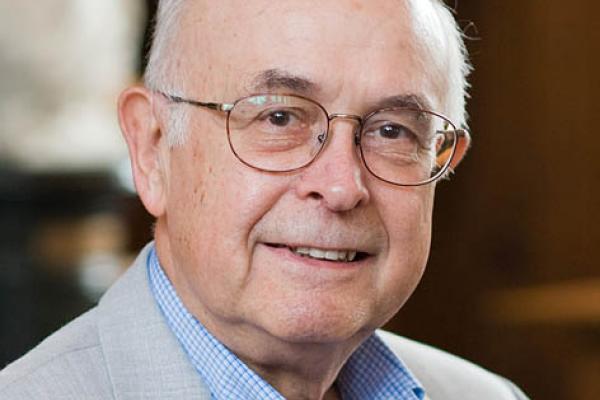THIS YEAR MARKS the 50th anniversary of the Vatican II document Nostra Aetate, the 1965 proclamation on “the relation of the church with non-Christian religions.” I want to celebrate a great theologian whose life intersects with that moment and whose work exemplifies its ethic.
Paul Knitter grew up in a strong working-class Catholic family on the South Side of Chicago and felt the call to the priesthood in his early teens. After four years of seminary high school and two years of additional novitiate training, he joined the Divine Word Missionaries (or SVD), an order whose main work was bringing non-Catholics into the Catholic faith. His regular prayers included the line “May the darkness of sin and the night of heathenism vanish before the light of the Word and the Spirit of grace.”
Reflecting back on this practice in his book One World, Many Religions, Knitter writes: “We had the Word and Spirit; they had sin and heathenism. We were the loving doctors; they were the suffering patients.”
Knitter’s journey took a number of unexpected turns. As he sat with the other seminarians listening to the stories of returned SVD missionaries, he discovered that he was fascinated by the slide shows of Hindu rituals and Buddhist ceremonies. He even detected a hint of admiration in the voices of older SVD priests as they described the elaborate non-Christian religious systems that they encountered on their missions. One brought in an Indian dance group and explained that their performance was developed in a Hindu context but had been adapted to glorify Jesus. Knitter was entranced by the intricacy of the movements, and he found himself wondering whether “sin and heathenism” were the correct terms for a tradition that could inspire such beauty.
Knitter was hoping to evangelize in Japan, and so he began a study of that nation’s history and culture. In his reading, he came across Zen Buddhism and found himself deeply moved by “the rigor of its practice, the claimed illumination and peace of the satori experience. There was much I couldn’t fit into my Christian categories; there was much I liked.”
In 1962, Knitter’s studies took him to the Pontifical Gregorian University in Rome where he began studying with the renowned Jesuit theologian Karl Rahner, who was struggling to articulate the relationship between his notion of Christian uniqueness and the clear worthiness of other religions.
Something else was taking place in Rome in 1962—the beginning of the Second Vatican Council. As the church conducted its business in Latin, and as Knitter’s language skills were markedly better than those of many of the bishops who were a formal part of the Council, on a nightly basis he found himself being asked by sheepish bishops to translate sub secreto (confidential) church documents. One of these documents was the “Declaration on the Relationship of the Church to Non-Christian Religions.” Knitter was ecstatic to read the positive statements about the truth and values of religions such as Hinduism, Buddhism, and Islam in an official church document. It provided him just the affirmation he needed.
This was one of those times when personal biography and world history intersected with cosmic effect. To borrow a line from a recent U2 song: Paul Knitter was waking “up at the moment when the miracle occurred.”
He would go on to do a doctorate in Protestant approaches to other religions, become among the most prominent Christian theologians of interfaith cooperation in the world, and continue to cultivate a deeply appreciative knowledge of other traditions, culminating in his most recent book Without Buddha I Could not be a Christian.
All along he has remained an evangelist—for engagement, understanding, and appreciation.

Got something to say about what you're reading? We value your feedback!

